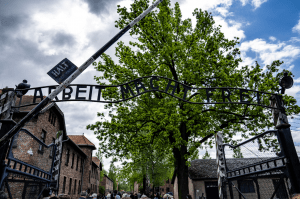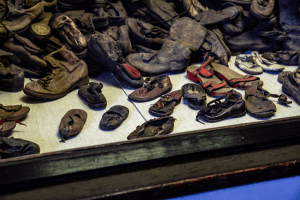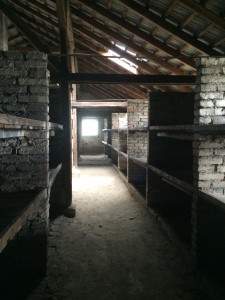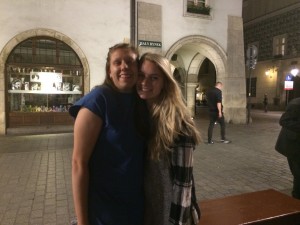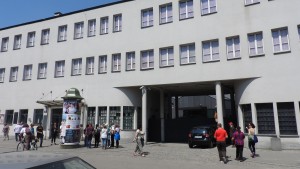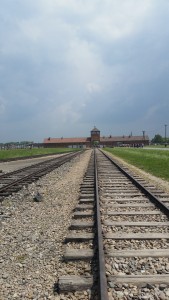By Matthew Bonner
We arrived in Berlin, Germany on May 24th after a day-long charter bus ride from Krakow. While in Berlin, we visited numerous museums, but two that stood out the most were the Topography of Terror and German Resistance Memorial Center. The Topography of Terror is located on the site of the previous SS and Gestapo headquarters. The museum is at a cross section of Berlin’s history, as a portion of the Berlin Wall is still standing in the complex along with recently excavated SS underground torture chambers. The German Resistance Memorial Center is a museum dedicated to German resistance in all forms. The center is located on the site where members of the failed July 20 plot that attempted to assassinate Hitler were executed.
Both museums are examples of the theme we discussed in class of the German struggle with the reality of mass support for the Nazis. The museums are unique compared to other countries’ museums because they focus on the individual, rather than the collective. The Topography of Terror is one of the only museums that focused on the perpetrators, rather than the victims, of Nazi persecution. The exhibits highlight how individual German Nazis were supporters of the Third Reich’s actions. One of the most shocking and disturbing takeaways from the museum was the human element of perpetrators, as a photo revealed SS men and women having a fun time on a sunny afternoon only a short distance away from the Auschwitz concentration camp.

Topography of Terror exhibit depicting SS men and women at a retreat 30 km south of the Auschwitz concentration camp.
In the German Resistance Memorial Center the focus was again on the individual, taking us through different assassination attempts and resistance by Christian Churches, networks of Communists, and Social Democrat groups. Though it is overwhelming to read about all the different resistance movements and individuals active in opposing the Hitler regime, the museum does not disguise that a majority of Germans supported the Nazi Party and that there was never an effective large scale resistance movement mobilized. The two museums in Germany both highlight individual stories and actions in an attempt to come to terms with the actions of a whole country and “the resistance that never was”.

A wall showcasing the individuals behind resistance efforts at the German Resistance Memorial Center.
This depiction and focus on the individual from Germany is in direct contrast to the museums we visited in Krakow, Poland. Poland largely interprets the war and its aftermath as a claim to national innocence and focused on how the war affected the unified people of Poland. Specifically, the Schindler Museum walked us through the war’s impact on both Poland and the city of Krakow. We were guided by a tour guide from Krakow, who added an extra level of insight through her Polish perspective. For example, she constantly mentioned how the war was a war against all Poles and described how Jews had been assimilated into Polish society for centuries. In addition, one of her main themes throughout the tour was that there are always both good and bad people in a society as a way to explain many of the atrocities that occurred in the country under occupation. In the museum, the exhibits largely focused on the Polish people, instead of individuals and specific populations. Oskar Schindler himself was only allotted two rooms in the museum to describe his contribution, with the focus instead on the Polish experience during the war as one collective memory.
Both the individual and collective interpretations can be harmful for a society post-war. Many German museums highlight the individual in an attempt to showcase the heroes during a horrible time in its history. However, other museums vitally depict how the German people were largely complicit in the Nazi rise to power. In contrast, Poland focuses on the collective – often washing out individual stories – with the claim that the war was terrible for everyone. This collective memory fails to acknowledge the stories of specific populations in Poland, such as Jews, that had drastically different experiences in the war. Ultimately, this duality is critical to understand because the best way to come to terms with the war is through a combination of both the individual and collective perspectives. History and people are not clearly defined as good and bad or black and white, and only through a comprehensive and inclusive look at the past can we begin to fully understand World War II and its impact.



